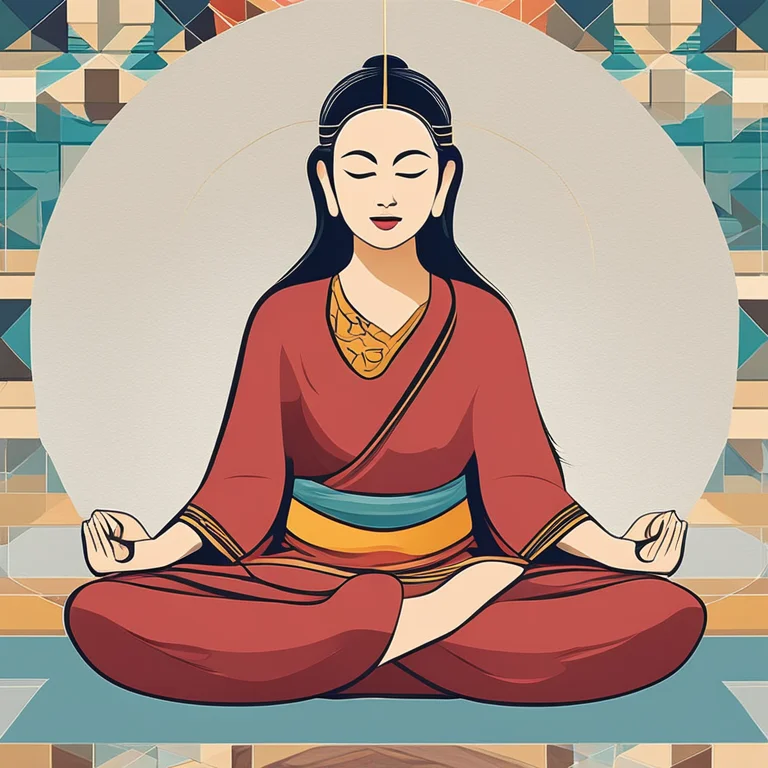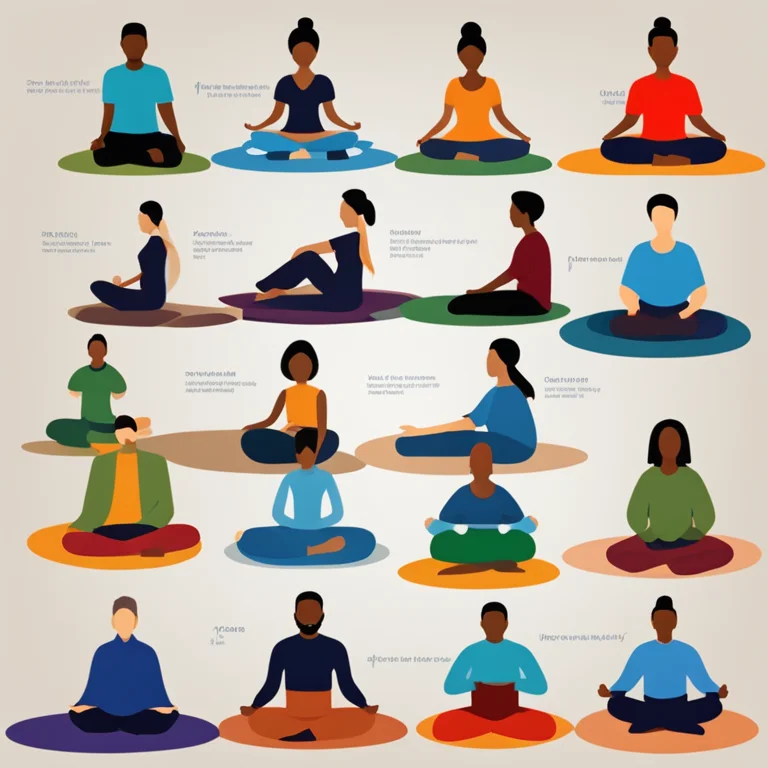
Mastering Meditation Positions for Enhanced Practice
Discover effective meditation postures for deeper relaxation and improved spiritual alignment in this enlightening guide to mastering your practice.
article by Hina Kurosawa
Introduction to Posture in Meditation
Proper posture is a cornerstone of effective meditation practice, enabling practitioners to maintain focus and achieve deeper states of relaxation. The ideal posture aligns the body in a way that supports alertness while minimizing discomfort, facilitating a state where one can meditate for prolonged periods. As we deepen our understanding of meditative techniques in 2024, acknowledging the individuality of practice becomes essential. Not one posture fits all; rather, each person must find the balance between tradition and personal comfort.

The Classic Lotus Position
The lotus position, or padmasana, remains a quintessential meditation posture, symbolizing purity and enlightenment. In this cross-legged pose, each foot rests on the opposite thigh with the soles facing upward. While it requires significant flexibility, the lotus position is revered for the stability and symmetrical alignment it provides. Practitioners of yoga and meditation often favor this position for its purported effect on energy flow and concentration. However, it's important to approach the lotus with caution—gradual practice is necessary to avoid strain on the knees and hips.

Seated Positions for Every Practitioner
Not everyone can comfortably assume the lotus position, and fortunately, alternatives exist. The half-lotus and simple cross-legged positions offer similar benefits without the strain. The Burmese position, with both feet lying flat on the floor, serves as an excellent option for those requiring less leg flexibility. For added support, sitting on a cushion or folded blanket elevates the hips, facilitating a straighter spine. Chairs are also a viable choice, especially for those with mobility constraints, ensuring that meditation is accessible to everyone.

Aligning the Spine with Kneeling
Kneeling positions, like Vajrasana (Thunderbolt pose), permit meditators to maintain an erect spine without crossing their legs. Utilizing props like meditation benches or cushions can reduce pressure on the legs and enable longer sessions. This posture, apart from encouraging an upright spine, also aids digestion, linking physical and spiritual health—a theme gaining momentum in 2024's holistic health narratives.

Standing Meditation for Dynamic Energy
Standing meditation, though less common, is another powerful pose; it embodies strength and rootedness. In the Mountain Pose (Tadasana), one stands with feet hip-width apart, arms at the sides, and palms facing forward. This position is associated with active energy flow and is especially suitable for short practices focusing on grounding and centering. It's a reminder that meditation need not be passive but can be dynamically integrated into one's daily life.
Lying Down for Complete Relaxation
For ultimate relaxation, the lying down position or Shavasana is favored. It involves lying flat on the back, arms and legs spread comfortably apart, and eyes closed. This position is particularly beneficial for those with back pain or sleep issues, echoing the increasing awareness of meditation's role in sleep hygiene. In modern mindfulness practice, relaxation techniques such as body scans are often guided in this posture.
Published: 1/9/2024
Modified: 1/9/2024
More predictions
Come back here soon to learn more about yourself and your future


Mindful Rest: Integrating Meditation & Sleep for Well-being
Discover the synergy of meditation and sleep in enhancing mental, emotional, and physical health. This article delves into practices that combine these powerful restoration tools.


The Harmony of Meditation and Sleep
Discover the synergistic benefits of meditation for enhancing sleep quality and overall well-being in this insightful article.


The Tranquil Bridge: Meditation's Impact on Sleep Quality
Discover how meditation can enhance sleep quality, weaving a path to better rest and well-being